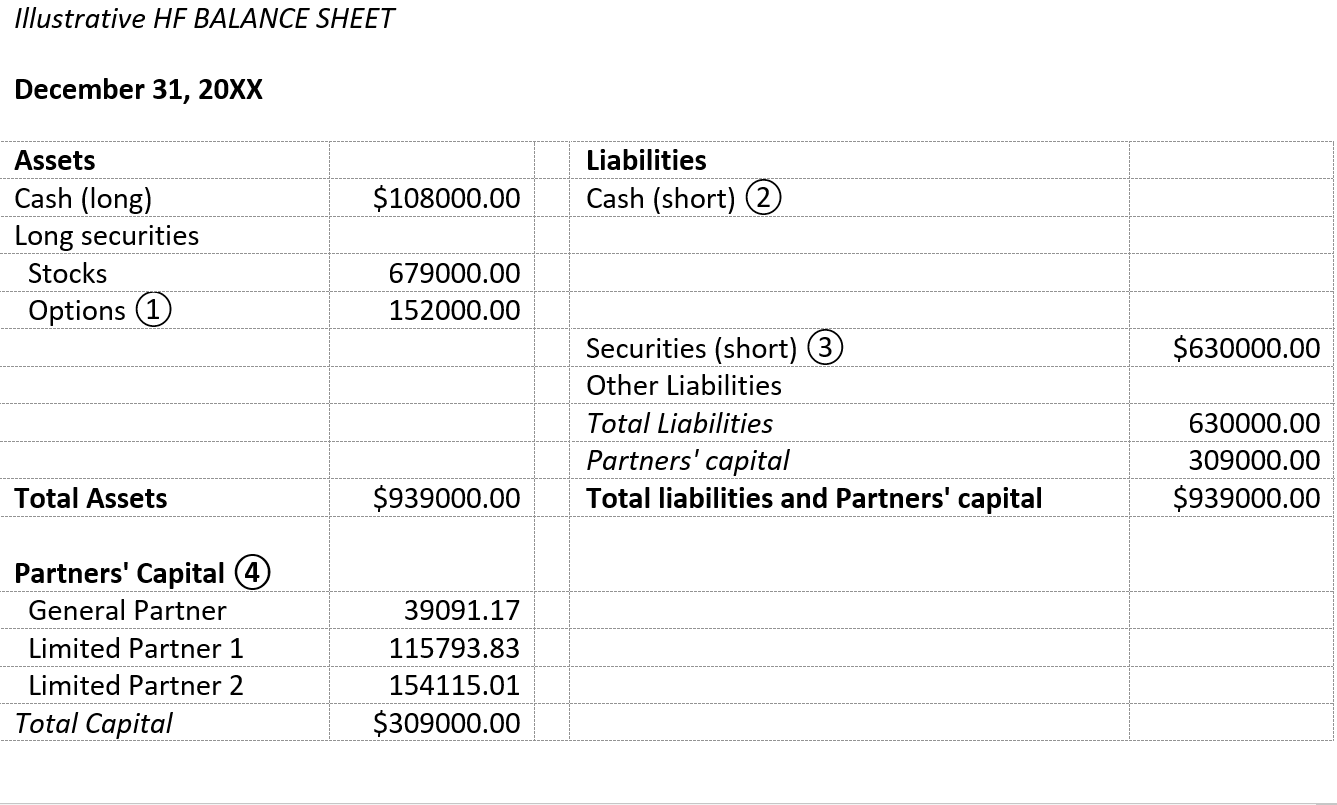COMMUNITY APPS/BLOGS
BALANCE SHEET
A good starting point for our purposes is to look at an illustrative balance sheet for a hedge fund.

In the course of analyzing materials progressing through the guide, we will indicate how data appearing in this balance sheet are generated. But for the moment, let’s just note a couple of items of interest, marked in order of the symbols such as ①, ②, etc. We specifically include options/derivative contracts ① as part of our HF’s portfolio as this asset class in general constitutes a unique feature of a hedge fund. A quick summary of the basic operations of equity options are provided in Practical Understanding of Options, under the Community Apps/Blogs heading. Another item of interest is our HF’s short positions ③ appearing on the liabilities side of the balance sheet. Further, while the entry of the HF’s short cash position is empty in the table, we include this item here to remind ourselves that trading on margin/leverage is yet another common feature of hedge funds. Central to this guide, however, is how Partners’ capital ④ in an investment partnership is determined. To set up the basic framework from which we will demonstrate how these figures are calculated, let us expand ④, which represents Partners’ Capital at year end as follows:
Partners' YTD Capital
Here, a quick glance indicates that each partner’s year end capital depends on its capital at the beginning of the accounting year ⑤, affected by new capital contributions (deposits) and redemptions (withdrawals), net investment gain/loss such as dividends and interests, realized and unrealized gains/loss as well as management fees (asset-dependent fixed fees) and performance-incentive reallocations ⑥ from limited partners to the general partner. At a general level, this looks simple enough, but as we shall see the devil is really in the details!
Side Comments on this Partners' YTD Capital Table:
In the Table's title, the indicator at the end "charge" simply refers to the break period in which performance fees, if applicable, are assessed. In addition, the two rows are marked by lightly shaded gray color and number ① appearing there for a reason--we will explain them when appropriate, simply ignore them in the meantime. Note also that the last row of this table, Partners' Capital ④, marks a complete connection to the same item of the Balance Sheet in the previous table.
